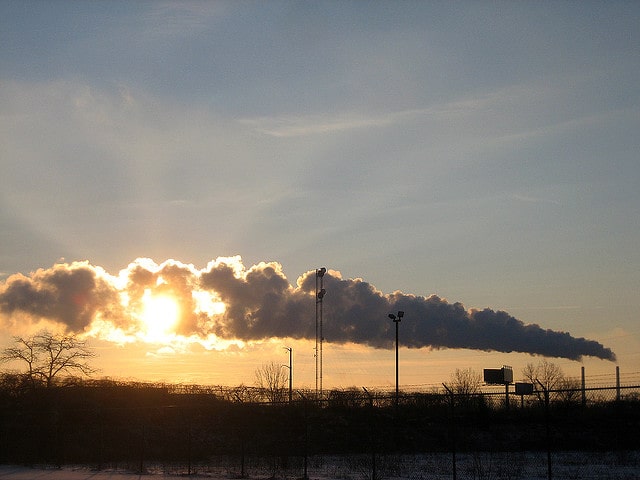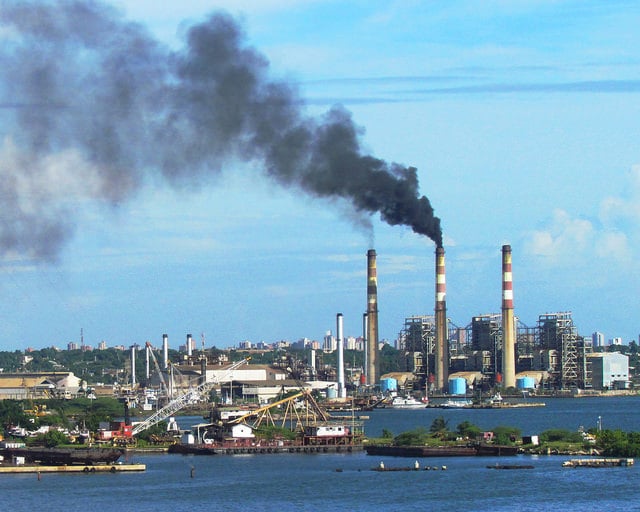Causes, Effects and Solutions of Ocean Acidification

When discussing environmental pollution, one may immediately refer to pictures of smog in China, litter in farm fields, or plastic rings in the oceans. Pollution takes on many forms besides simply air and land pollution. Pollution of the ocean is becoming a greater problem for our food web than many realize. The negative impact of atmospheric pollution is not only affecting the oceans but our own livelihood on land. Without drastic measures taken to ensure ocean health, pollution will eradicate the many ocean species we as humans rely upon for our own survival.
Ocean acidification is a growing problem in our modern society that has become so dependent upon gas, electricity, and a wasteful mindset. Since the beginning of the industrial revolution, the release of CO2 due to man-made activities has increased the amount of CO2 concentrations in the atmosphere. With the lack of environmentally friendly legislation, laws, and practices in our society, the biochemistry found in oceans is changing and evolving in a negative manner.
Oceans require a particular level of pH to maintain the natural biochemistry needed to allow a healthy ecosystem to remain intact for the species living in the water. When oceans absorb high levels of carbon dioxide, the acidity levels raise and the natural order of the ocean becomes compromised. This is what is known as “ocean acidification” or “OA” for short. Calcium carbonate minerals are building blocks for skeletons and shells of marine organisms. However, continued ocean acidification is causing many parts of the ocean to become undersaturated with these minerals. The lack of these minerals is reducing the ability of some organisms to produce and maintain their shells.
Ocean acidification is linked to climate change in that a negative aspect of carbon dioxide in the atmosphere disrupts the natural order of ocean life. Higher levels of carbon dioxide in the atmosphere that are causing climate change are an effect we can see around us given that we are land mammals. When climate change occurs underwater, seemingly only affecting the marine life, we as humans are less likely to identify the problem because the issue is not directly in front of us.
According to Wikipedia,
Ocean acidification is the ongoing decrease in the pH of the Earth’s oceans, caused by the uptake of carbon dioxide (CO2) from the atmosphere. An estimated 30–40% of the carbon dioxide from human activity released into the atmosphere dissolves into oceans, rivers and lakes.
More than a quarter of carbon dioxide that is released does not stay in the air, but is absorbed in the ocean. Estimates have arrived at the number of five hundred twenty five billion in regards to how many tons of carbon dioxide that has been absorbed by our oceans, with approximately twenty two million tons per day.
Causes of Ocean Acidification
- The industrial revolution
- High concentration of carbon dioxide
- Burning of fossil fuels
- Cement manufacturing
- Changes of land use
- Raising of carbon dioxide levels in the ocean
- Raising of carbon dioxide in the atmosphere
- Chemical reactions causing high concentration of hydrogen ions
- Decrease in carbonate ions
- Loss of biodiversity
- Production alterations of biogas
- Lack of environmentally friendly laws and regulations
The negative effect of poor ocean biochemistry will lead to an effect not only detrimental to the world’s oceans, but to the coastal estuaries and waterways. Local economies will suffer when fish are tainted and in low supply due to a poor food web. Fisherman will be unable to produce food for the community, and fisherman will suffer when fish cannot be sold. Tourism will decline when coastal communities are tainted and species relative to the oceans will become extinct.
Over the past two hundred years, the pH level of the ocean surface has lowered by .1 units. This change of .1 units represents a thirty percent increase in acidity levels. If oceans continue to rise in acidity levels, the carbon dioxide will become even more acidic. With an already compromised acidity level, coupled with a higher concentration of carbon dioxide, oceans have the possibility of becoming one hundred and fifty percent more acidic. If steps are not taken to reduce carbon dioxide levels in the ocean and business goes on as usual, the oceans can expect to have the highest pH levels in more than twenty million years.
With a seemingly long time frame in which the ocean has been poisoned by high levels of carbon dioxide, the marine life have not had a chance to adapt to the new levels of acid in their habitat. Shells erode and species are forever poisoned due to the lack of adaptability the creatures face. A few organisms are able to adapt to the new circumstances but many other organisms so not have this capacity for evolution. One organism or life source is not more important than another. All life forms within the ocean play an important role in maintain the marine food web. Dangers to the biodiversity in the ocean not only affect the marine life food web, but the human food and economic web reliant on healthy fish.
Effects of Ocean Acidification
- Shells and calcium carbonate ions become less populated in seawater when acidification is in place
- Shells of sea life disintegrate after forty five days in toxic waters
- Oysters, calms, sea urchins, coral and plankton cannot calcify
- Food web interruption
- Tainted fish and sea life are unable to be consumed by other animals in the sea, or be consumed by humans
- Less food for human consumption
- Tainted water supplies, not only in the ocean but in the waterways
- Disruption to local economies due to lack of ability to fish
- Levels of carbon dioxide increase in the oceans
- Tourism is halted
- Climate regulation
Solutions of Ocean Acidification
- Local, state, and federal regulations
- Education of ocean acidification to the people
- Geo-engineering
- Regulations on factories and those produce fossil fuels
- Reducing ones carbon footprint
- Reduce energy use
- Reduce electric usage
- Support environmentally friendly initiatives
- Buy and eat fish that were harvested humanely
Acidification of our global oceans is an important task that needs to be addressed and remedied. When our oceans of the world suffer, not only does the marine life suffer, but the humans that depend on water sources will suffer as well. Ocean acidification affects every species in our world in some form or another. Whether we are directly affected or indirectly affected, we all feel the impact of higher carbon dioxide in our oceans.
Given that we all are culprits in the rising acidity levels of the ocean, and we are all affected negatively by this issue, everyone has the capability of offering a solution. Simple tasks can be undertaken by individuals, and large tasks can be undertaken by groups of interested people. Beginning somewhere is the first step to a healthier environment.
Ways in Which Individuals can Help to Reduce Ocean Acidification
- Be mindful of your pollution rates
- Walk, bike, or utilize public transportation
- Eat less meat
- Eat less fish
- Eat humanely sourced food
- Change your light bulbs
- Use less water
- Create a waste barrel
- Compost your wasted food
- Take showers and not baths
- Recycle
- Plant and maintain trees
- Utilize gardens
- Shop at farmer markets
- Rely less on coal and fossil fuels
Ways in Which Groups can Help Reduce Ocean Acidification
- Find like minded people in your community willing to take on ocean acidification
- Educate your friends, family and neighbors on the effects of carbon dioxide levels
- Start a community action group
- Write you local and state leaders demanding change
- Contact federal leaders and encourage them to take action
- Begin a recycling center
- Begin a ride share
- Begin a light bulb exchange
- Plant an urban garden for use in the community
- Care for local parks and reestablish trees and flowers
- Create community rain barrels
- Develop a community comporting area
Ocean acidification has worsened greatly over the past generations and is on track to become an incredibly large problem over the next millions of years. Unless action is taken soon to stop the carbon dioxide levels from continuously increasing to dangerous levels, oceans will continue to become toxic and poison the marine life within. With many hands comes light work. When all individuals take part in reduce carbon dioxide in the atmosphere, the task of reducing acidification is not as large and unobtainable.






